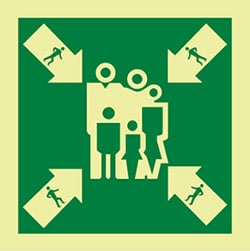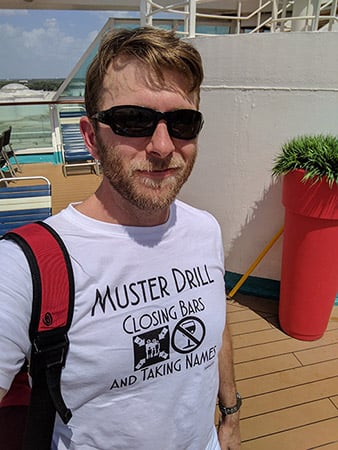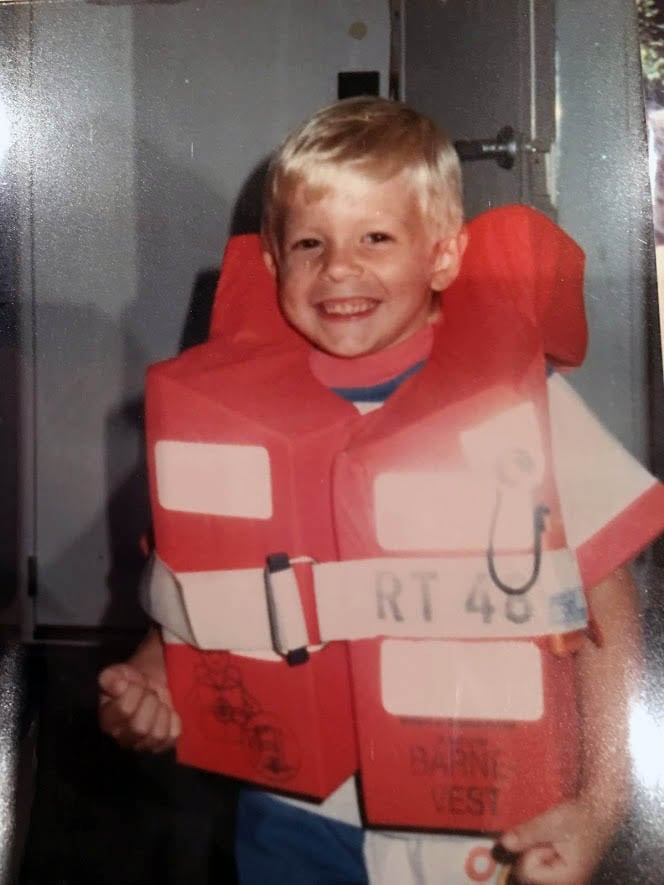The first day of your cruise is filled with excitement as you explore the ship and start your vacation, but safety is the priority, so you'll invariably be participating in a muster drill. It may not be the most fun part of your vacation, but let's go over what muster drills are, why they're important, and how you can make the best of this "lost time" on embarkation day.

What is a Muster Drill?
A muster drill is a mandatory emergency drill (sometimes referred to as a lifeboat drill, though you won't actually be using a lifeboat in this process) which takes place on the first day of your cruise. When you arrive for muster the crew will check you in (ensuring everyone is in attendance), note any special needs individuals have in the event of an actual emergency, and then, once the entire ship is assembled, there will be a safety presentation. The safety presentation may be on a screen, performed by a crew member standing right in front of you, over the PA, or any combination thereof. The primary topics covered are:
- A roll call and confirmation that all guests are in attendance (they will find you).
- How guests and crew will be notified of an emergency (and the horn/whistle/alarm will be demonstrated).
- What to do in the event of an actual emergency/when if you hear the ship's alarm.
- How to don life-vests (some lines require you to wear them to the drill, others don't).
- Other safety notes, such as rules regarding disposing combustibles (cigarette butts, etc).
You Won't Be Able to Miss It
Not only is it mandatory, but even if you've no idea what muster drill is, it's pretty impossible to miss as there are multiple ways in which the crew informs guests of muster.
- When you check in at the port you'll be provided with the day's schedule which includes the time for muster.
- Multiple announcements will be made ahead of muster noting the time and how to find your muster station.
- Starting a bit before muster all guest services will cease - yes, this means the bars will close, too.
- While guest services are suspended (as the crew has safety duties to tend to for the drill) nearly every crew member you see will begin reminding guests about muster and answering any questions.

Where is the Muster Drill?
The location of the muster drill may actually be the most important part, as one of the goals is to ensure that guests know where to assemble (or "muster") in the event there is an actual emergency. Your stateroom location determines your muster station, and the station (often expressed as a number and letter, such as "D4") is indicated on your stateroom keycard and on the back of your stateroom door. On the back of the door you'll also find a map with at least two routes showing you how to get to your muster station from your room. Signs (like the one shown above) are found throughout the ship along with station numbers and directional indicators, and you can always ask a crew member for assistance finding where you're supposed to be.
Muster stations are sometimes located in lounges, theaters or other indoor public spaces. On many ships some muster stations are located outside on the promenade deck. If you arrive to your muster station to find that the particular location is challenging for you based on mobility issues or other complications, simply let a crew member know and they'll help you make alternative arrangements.
Who Requires Muster Drill Attendance
Muster drill and pretty much all things safety are regulated by an international set of guidelines in SOLAS, the Convention for Safety of Life at Sea. You can read more about SOLAS in our article about lifeboats. This convention, which almost every nation has signed onto, requires that muster drills occur within 24 hours of sailing, though cruise lines now perform muster prior to leaving port to ensure that if there was an emergency shortly after departing, all guests would be aware of safety procedures. The International Maritime Organization (IMO) also regulates how long it can take for a ship to be evacuated (30 mins) and other related safety factors. It doesn't matter how many times you've cruised, even on the same ship, all guests and crew are required to attend muster. If you miss muster, perhaps because of a late arrival, a medical incident, etc, a separate drill will be conducted just for your party.

Billy's Muster Drill Tips
- Don't make plans for "right after muster" and expect to be there in 2 minutes. While muster may only take 10 or 15 minutes, the rush of people leaving the drill and heading to elevators, major corridors, etc makes things more congested than any other time on the ship. We hang out for just a few before even leaving our station.
- Just before muster, use of elevators will be restricted to those guests with mobility difficulties. Just let the crew know if you require assistance, which is also important for them to note in the event of a real emergency.
- Don't play with your phone once the drill starts! While it's not fun, these drills are important.
- Before the drill starts take the time to meet your neighbors. Because stations are assigned based on stateroom location, you may find the your neighbor lining up next to you. This is a great way to break the ice and have the "knock on the ceiling if I'm being loud" chat.
- Kids aren't exempt, and in fact, if you have children in the kids programs the staff will ensure they get to their muster stations in the event there is an emergency while the kids are with the program. They'll explain this and other safety information to you.
- If you're in the Caribbean put on some sunscreen before muster and bring your sunglasses. We're probably just unlucky in this way, but it seems anytime we have an outside muster station we're staring into the sun the entire time.
Have questions about muster drills? Comment below or reach out on Twitter or Facebook!


